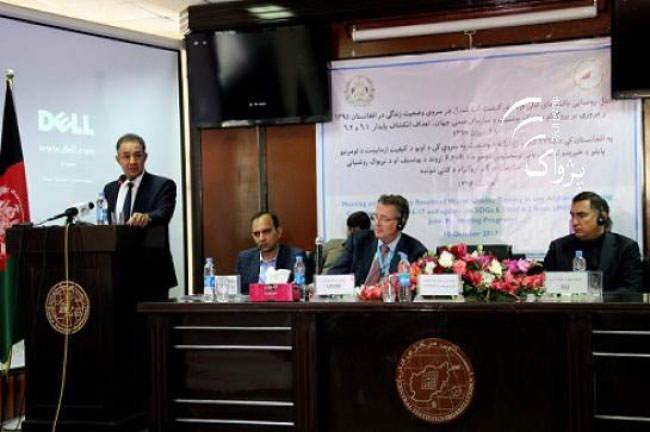KABUL - Drinking water in 10 provinces of the country is 85 percent polluted with the E. coli bacteria, according to a survey calling for serious steps, especially raising public awareness, to address the public health issue.
E. coli is a type of bacterium commonly found in the lower intestine of animals and humans and can cause serious food poisoning in their hosts, especially the elderly people and children.
In collaboration with the ministries of public health, rural rehabilitation and development, UN Children's Fund (UNICEF), European Union and World Bank, the Central Statistics Organization (CSO) conducted the survey in the solar year 1395
Aimed at assessing the living condition of Afghans, part of the survey included the examination of potable water. The findings were announced on Tuesday in Kabul.
Haseebullah Moihid, CSO deputy head, said the survey was carried out in Kabul, Balkh, Kapisa, Samangan, Badakhshan, and Kandahar, Daikundi, Nangarhar, Khost and Herat provinces.
He said drinking water from open wells and tube wells, consumed by 900 families in 10 provinces, was examined.
The survey findings revealed the contaminated water percentage is high.
Moihid cited low public awareness regarding environmental hygienes as a key factor behind the high level of E. coli-contaminated water. Many people drink water from wells and septic tanks.
Based on the World Health Organisation (WHO)’s definition, if 100 milliliters of water contain less than one microbe of E. coli, it is not harmful. If the level is higher than that, it becomes dangerous.
He said the water pollution percentage was lower in Badakshan and Kabul provinces. However, the percentage was higher in Samangan and Balkh provinces.
The survey indicates very high risk is the one in which water is one hundred percent contaminated with E. coli. High risk is one that has 11 percent of the bacteria per 100 ml of water.
One to 10 percent contamination of water with the bacteria fell in the medium-risk category, he said, adding low risk included less than one percent of bacteria in water.
He urged families to make efforts to use clean pots for storing water and drink boiled water. Very high risk in water of cities was put at four percent and in rural areas at eight percent.
High risk is nine percent in urban areas and 28 percent in the countryside. Medium risk is 32 percent in cities but 30 percent in rural areas. Low risk is 55 percent in cities and 34 percent in rural areas.
Moihid billed the existence of the bacterium in water as worrisome, asking relevant organs to take the issue serious and initiate special programmes for resolving the problem.
He said all details of the survey were not fully analysed and studied and they would be published soon.
UNICEF Representative in Afghanistan Rolf Lubyenijk said the E. coli microbe caused many diseases, including severe and red diarrhea.
He said 10,000 children infected with diarrhea died every year in Afghanistan. The Afghan government should take measures for raising public awareness to bring down the level of water polluted with the E. coli bacteria. (Pajhwok)
Home » Afghanistan » 85pc of Drinking Water in 10 Provinces Contains E. Coli
85pc of Drinking Water in 10 Provinces Contains E. Coli

